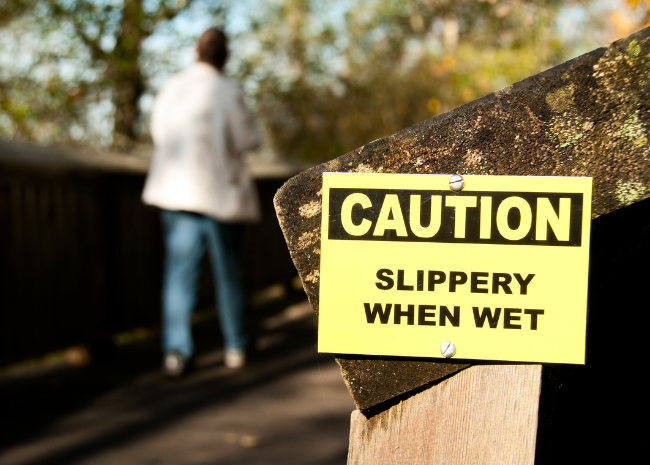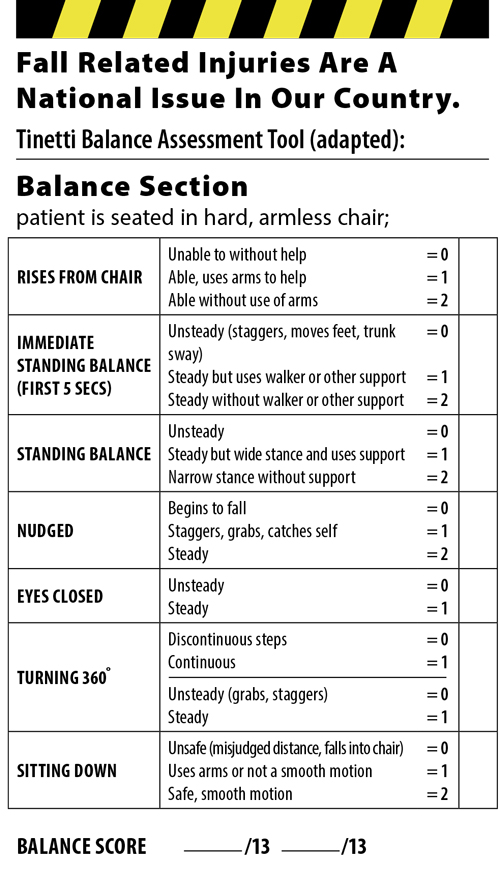
Did you know, according to the CDC, one in every three adults 65 and older suffers a fall each year in the United States, making Fall Prevention Programs critical for long-term health.
Let’s face it: the numbers are staggering. As we age, it appears that there is a direct link between the gradual loss of sharp eye sight, and decline in balance. The two could be seen as going hand in hand since the worse your vision gets, the more likely you are to bump into or trip on something unnoticed.
Recognizing Fall Risks
The likelihood of falls increases with age due to numerous factors. Understanding the common causes, risk factors, and medical conditions that heighten fall risk can guide us in implementing preventative measures. Our fall interventions are designed to mitigate these risks.
Common risks for fall among the elderly include:
- Poor balance and coordination
- Weak muscles and decreased flexibility
- Vision problems
- Side effects of medication
- Environmental hazards such as slippery floors, poor lighting, or cluttered paths
Several medical conditions can also raise fall risk:
- Osteoporosis: Weak bones can lead to fractures from falls
- Diabetes: Nerve damage and decreased sensation can affect balance
- Cardiovascular diseases: Conditions like low blood pressure or heart disease can cause dizziness or fainting
- Neurological disorders: Conditions like Alzheimer’s disease or multiple sclerosis can affect balance and coordination
However, there is nothing to be concerned about. Physical therapy may not improve vision, but it does improve our ability to reduce the likelihood of a fall and, even more importantly, a resulting injury.
About Fall Prevention Programs
Fall Prevention conditioning programs provided by physical therapists are designed to increase independence with functional activities, functional mobility, and safety awareness while decreasing fall risk.
Research has shown that a successful fall prevention program must be multi-dimensional.
A successful program must address all underlying factors in addition to strength and balance. Physical therapists use proven and reliable assessments to determine all the factors affecting each individual’s fall risk. The PT’s focus then becomes reducing these factors and decreasing fall risk.
The programs used by Physical Therapists are consistent with the protocols recommended by the American Geriatrics Society, as well as the American Academy of Orthopedic Surgeons’ Panel on Fall Prevention Guidelines.
THE MAIN GOALS OF FALL PREVENTION PHYSICAL THERAPY CONDITIONING PROGRAM ARE:
- Increase independence with Activities of Daily Living (ADLs)
- Increase independence with functional mobility
- Decrease fall risk
- Prevent future fall
- Increase safety
- Patient education
So, are you at risk of falling? Let’s find out!
Fall Risk Assessment
We have included an adapted Tinetti Balance Assessment Tool to help assess the likelihood of a fall. The Tinetti tool is the oldest clinical balance assessment tool and the most widely used test among older people (Yelnik, Bonan 2008).
The advantages of Tinetti’s balance assessment tool are its assessment of both balance and gait in real-world scenarios. (You can read more at the US National Library of Medicine).
Once you have taken your test – ask your physical therapist to go over the results and what options are available to decrease the risk of falls. The lower your score, the more likely you are to sustain an injury from falling.
Did you know you have Direct Access* to Physical Therapy? No referral, no problem!
Our team at The Jackson Clinics is equipped to assess your risk factors, devise personalized fall prevention strategies, and guide you on exercises, balance training, and home modifications to reduce your fall risk.
Want more content from TJC? Check us out on Facebook!

















